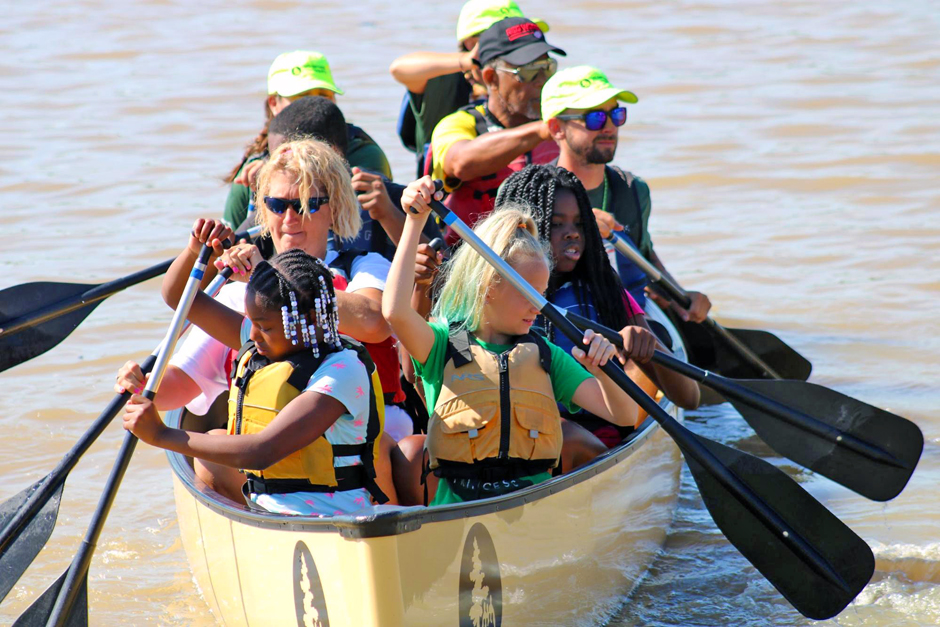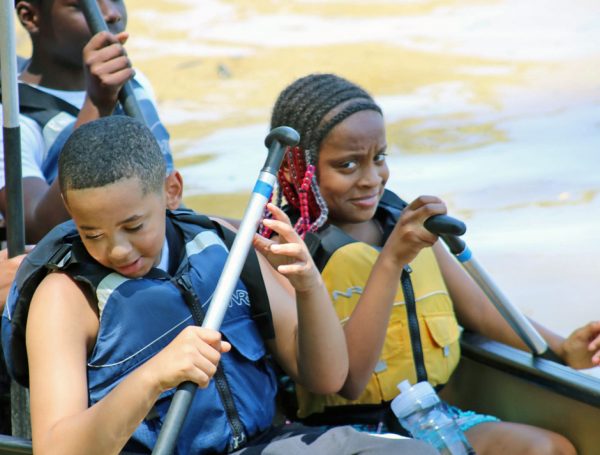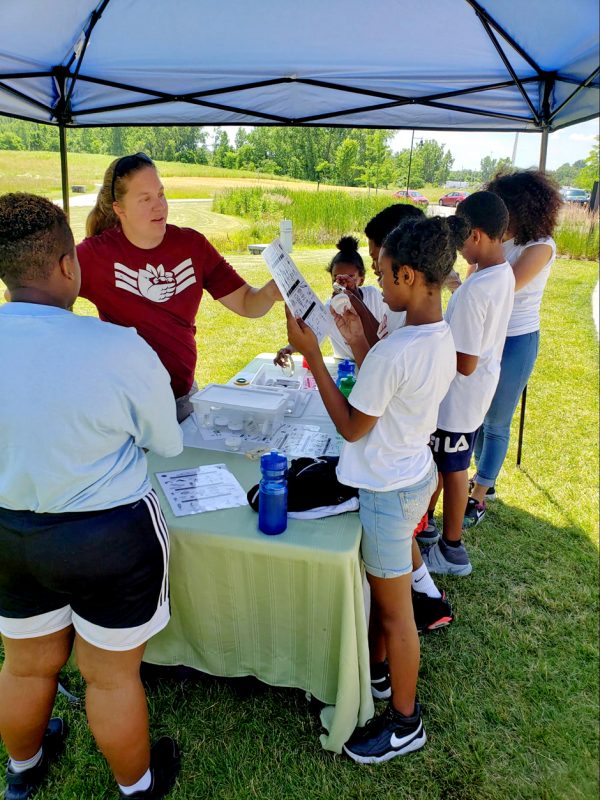A Floating Environmental Stewardship Classroom Visits Ohio
 Everyone helps paddle! (Credit: Mary Pat McCarthy, TMACOG, via source)
Everyone helps paddle! (Credit: Mary Pat McCarthy, TMACOG, via source)This summer a new way to learn about water recreation—and environmental stewardship—paddled into Ohio. With the help of the Toledo Metropolitan Area Council of Governments (TMACOG), the US Environmental Protection Agency’s (US EPA’s) Urban Waters Program brought the Wilderness Inquiry Canoemobile “floating classroom” to Toledo for a few days.
TMACOG Water Quality Planner Sara Guiher spoke to EM about the programming and the experience.
“In August of 2018 we spoke with a representative from US EPA Urban Waters,” explains Guiher. “We received funding through them to bring programming to the area focused on urban water resources. The person that we talked to from US EPA suggested Canoemobile, which we had never heard of. As soon as we heard some details, we said, how soon can you be here? Because it just sounded awesome.”
The Canoemobile Program brings 24-foot, 10-person Voyageur canoes to various waterways for on-water paddling experiences.
“Wilderness Inquiry is based in Minneapolis, Minnesota,” describes Guiher. “They brought seven staff people with them, one for each of the canoes, to serve as the captain who helps things run smoothly and takes everyone out.”
With so many first-timers on the water, safety is a priority for the WI team.

Some participants were unsure about canoeing at first. (Credit: Mary Pat McCarthy, TMACOG, via source)
“They give a safety talk about water safety ahead of time and fit each person with a life jacket,” Guiher says. “Each of the nine passengers in the canoe helps paddle, so they instruct them on how to properly paddle a canoe, how to hold your paddle so you get the least amount of resistance. That way when the passengers get out there, they already have the vocabulary to steer, paddle, and stop a boat so that they can listen to their captain and work as a team.”
Water quality community days
The TMACOG and WI community engagement event lasted for four days and offered two different types of programming.
“Three of the days were for youth engagement,” Guiher details. “We had groups of kids and programming focused for people in underserved communities, both urban and rural, who don’t necessarily have regular or easy access to things like paddle sports or canoeing. We reached out to those communities specifically and provided transportation if needed.”
The recreation, although valuable in itself, is typically designed to work in tandem with onshore educational events.
“For half of the time they were with the Wilderness Inquiry Canoemobile crew, doing the safety talk and then going out on the water and paddling,” remarks Guiher. “For the second half of the program, we had a total of 14 community partners, about seven partners for each of the youth days. They had activities stations set up.”
Of course, TMACOG’s Student Watershed Watch Program was present, along with tables hosted by partners. Guiher elaborates:
“We had a water footprint activity for food you might eat. We did water quality testing. We had an archaeologist talk, and we explored different soil types in different land covers and how that can affect the way that water runs off. There were also tables that featured different animals you might find in or around rivers in the area. So they got a really great educational experience in addition to the paddling experience.”
In fact, during the three youth days in total, the program saw 158 people go out on the water, and about 300 participants overall during the four days of programming. The last day was a Watershed Festival open to adults and youth. Participants were able to canoe and visit educational and informational tables set up by partners.
“I would say at least half of the paddlers had never been on the water at all before,” remarks Guiher. “We have some photos of people who were a little hesitant, maybe a little bit nervous at first. But the Canoemobile staff is so great, they really put them at ease.”
The TMACOG team sees the program as a place they have room to grow—and a source of potential.

Community partners provided educational stations during Canoemobile programming. (Credit: Mary Pat McCarthy, TMACOG, via source)
“The full capacity would have been something like 1,200 over the four days—and that’s not just from a planning standpoint, but also from a community awareness standpoint,” Guiher points out. “Since this was the first year, one of the challenging parts was calling people and saying, ‘Hey, you should let us pick up this group of 5th through 12th graders and bring them out to canoe with us,’ and explaining what Canoemobile was.”
More chances for outreach and impact
The team predicts more success signing kids up for youth days in the future because local people now know what Canoemobile is.
“We were really happy with it, a few hundred people is great,” comments Guiher. “As I said, I’m sure the majority had never been out on the water. That is our shared goal between the Canoemobile, US EPA Urban Waters, and Student Watershed Watch programs: connecting people, especially young people, with their urban water resources that they don’t have an appreciation for yet. Trying to foster that appreciation and then, hopefully, stewardship.”
Although the youth teams don’t sample from the canoes, the intimate connection between the scientific monitoring, the health of the water, and their own recreational adventures is not lost to them.
“We’re really glad that we were able to reach so many, especially young people, to be able to help them realize that rivers and water aren’t scary as long as you are safe,” remarks Guiher. “To see them learn about things on land that impact the water, I think that it just helps to bring together everything that we already do with Student Watershed Watch and our partners.”
Guiher and her team think repeats of the Canoemobile program could be a great thing in the area moving forward. Particularly for people who live in urban areas, water in rivers or lakes may look or seem dirty, but still be teeming with healthy aquatic life.
“One of the things that kids really love about Student Watershed Watch is the aquatic macroinvertebrates,” adds Guiher. “We had a station for aquatic macroinvertebrates all four of the days, and seeing that things live in the river and that the Canoemobile crew is walking into the river to get the boats launched and everything, and actually touching the water? I think that had a really big impact on a lot of them.”




0 comments